Spectra Assure Free Trial
Get your 14-day free trial of Spectra Assure
Get Free TrialMore about Spectra Assure Free Trial
On November 20, 2019, Twitter user @_re_fox1 reported that a malicious file2 was being hosted on archive.org in an encoded format called Base64. The sample was identified as njRAT3. This is a known technique used by adversaries to hide payloads on public sites4. This technique lets adversaries hide payloads due to the output from the encoding process being plain text. This makes detection more difficult for websites that host data for download and storage. However, this technique also requires an initial delivery phase malware file which then downloads and decodes the base64 payload. By examining known delivery phase malware samples that call out to achive.org, a large set of hosted payloads has been identified. A total of 18 personas and approximately 70 hosted malware samples are enumerated. These samples span a number of known remote access trojans (RAT) including njRAT, QuasarRAT, LimeRAT5, Cybergate6, RevengeRAT7, and Vjw0rm8. In addition to the RATs, a smaller number of malicious Windows executables were also found. One of the adversary personas, “@robacopony147”, uploaded a large set of PowerShell, VB Script, and Windows PE downloaders. Each chain of downloader is a delivery mechanism for either RevengeRAT or QuasarRAT. What follows is a deeper examination of each of the adversary personas and the malware they are hosting on archive.org. A graph showing all the hosted files, adversaries, and malware families is shown in Figure 1.

Figure 1: Malware Families on Archive.org (Green: Handles, Blue: Samples)
Most of the samples of njRAT are one of two versions, 0.7d or 0.6.4. The campaign IDs from the RATs’ configuration are primarily “HacKed”, “New_Zombie”, or “lol”. Other one-off campaign IDs are “WELFI DOFUS” and “nulled”. These files are encoded as Base64, and then stored as either data or text. Fortunately, archive.org stores an XML metadata file along with all uploads. This metadata includes the email address associated with the account used to upload the file. One example of this XML file is shown in Figure 2. A full list of adversary email addresses is provided at the end of the blog.
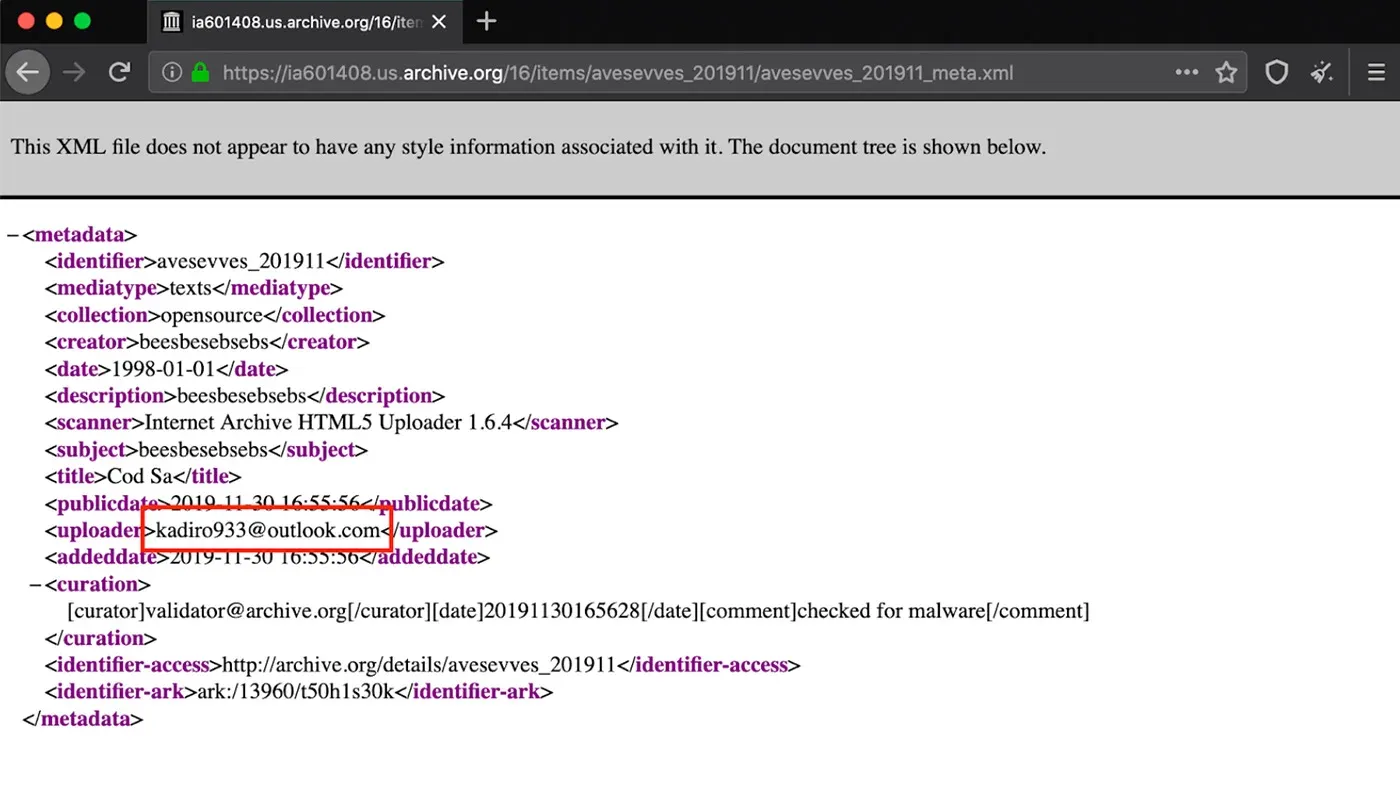
Figure 2: Adversary Email Address in Upload Metadata
Each of the njRATs found call back to dynamic DNS hostnames. The primary domains used are ddns[.]net, hopto[.]org, servehttp[.]com, ddnsking[.]com, and myq-see[.]com. This is a common adversary technique that allows the IP address of the command and control infrastructure to change as IPs are taken down without the malware being completely disabled by a single IP being taken offline. A full list of command and control infrastructure for this and other RATs is provided at the end of the blog.
The LimeRAT samples leverage both archive.org for payload hosting as well as pastebin.com for C2 configuration. The payload RAT is downloaded and installed from archive.org. The RAT then reaches out to pastebin.com and downloads a text file that contains the C2 IP or hostname along with the port. Two users’ uploads to pastebin.com are being used for storing this configuration: “frankie4lyf” and “hayder101”. Most of these uploads occurred in 2018, but one was uploaded on January 21, 2019. Screenshots of these two pastebin.com accounts is shown in Figures 3 and 4.
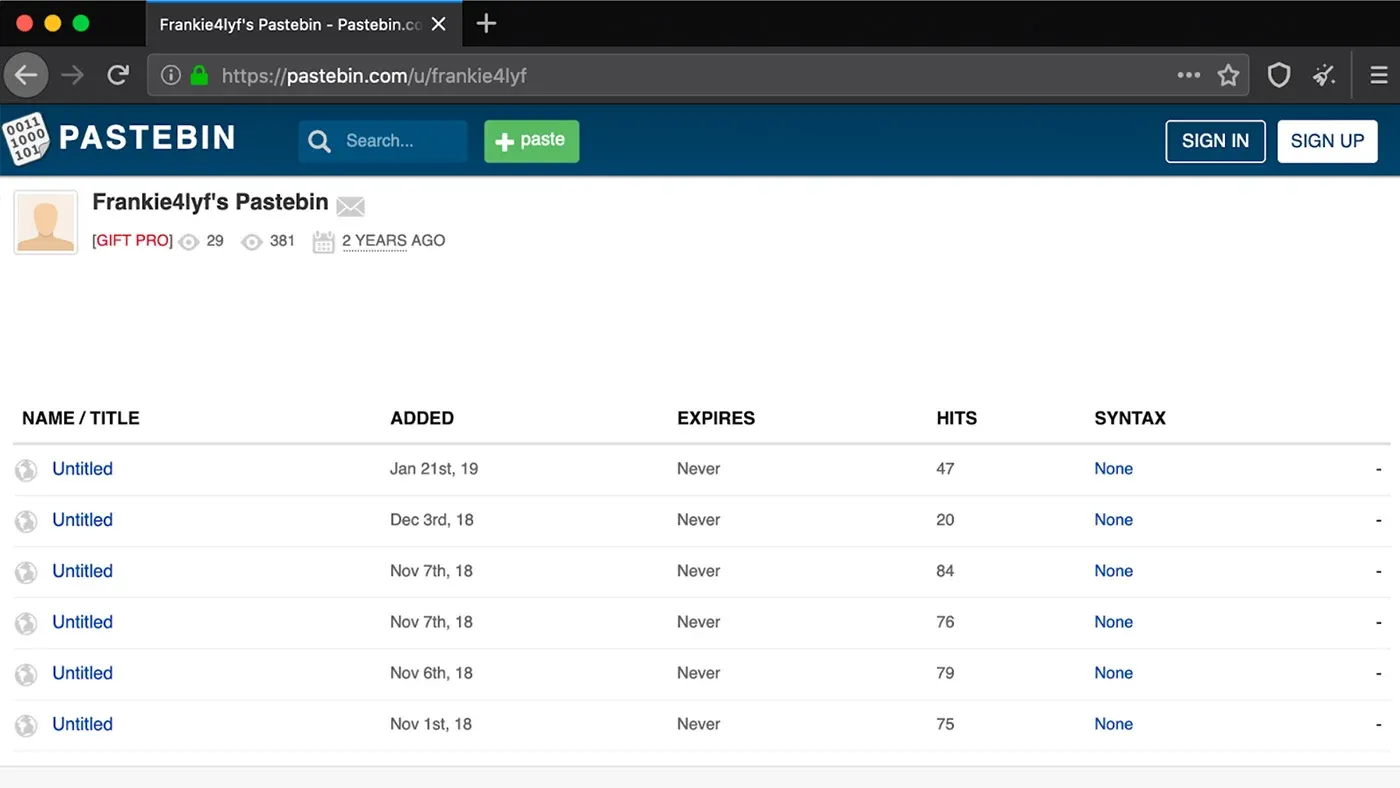
Figure 3: Pastebin.com Uploads from frankie4lyf
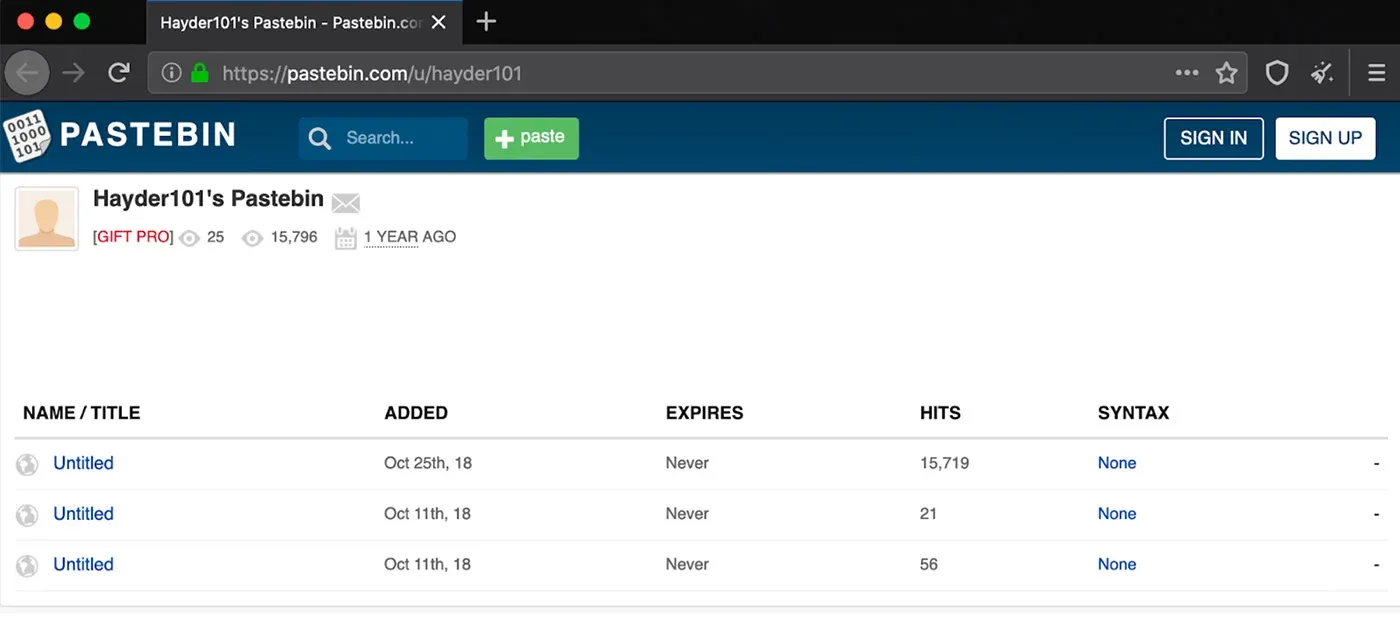
Figure 4: Pastebin.com Uploads from hayder101
One of the LimeRAT operators, “@xjnchng”, has an associated email address found in the upload XML metadata, “pierreross1864@gmail[.]com”. This email address is found in the registrant email address for an expired domain, akanchato[.]com9. This domain expired January 20, 2019 and predates all the uploaded RATs found on archive.org. A second domain versatileglobalfinance[.]com was registered using this same email address on September 12, 2016. In addition to these domains, this same email address is found in a posting on a carder forum, carder[.]tv10. A screenshot of this post is shown in Figure 5.
![Posting on carder[.]tv Mentioning Adversary Email Address](/_next/image?url=%2Fapi%2Fmedia%2Ffile%2FRAT_05-1400x707.webp&w=3840&q=75)
Figure 5: Posting on carder[.]tv Mentioning Adversary Email Address
Analysis of the email addresses associated with the adversary personas operating njRAT finds that four of the addresses appear in publicly known credential breaches according to haveibeenpwned.com11.
The email address abodeezahraa@gmail[.]com associated with the user @killershenegami appears in both the “Collection 1”12 credential dump as well as the dump from Canva13, a graphic design tool website. This email’s presence in these two dumps does not show anything conclusive about the adversary using another individual’s address for their purposes, but it is possible. The address maged.mega77@gmail[.]com, however, also appears in multiple credential dumps according to haveibeenpwned.com. It appears in dumps from two known hacking forums, cracked[.]to and void[.]to. This indicates that this is an adversary operated email address. Finally, peterpop673@gmail[.]com and funnyegyptian30@gmail[.]com both appear in credential dumps: ai[.]type and GameSalad respectively. Presence or absence in a credential dump does not conclusively indicate that the adversary has compromised that particular address. However, presence in dumps from known hacker forums does confirm the maliciousness of that particular address.
The adversary persona “@youyoudr” is operating a set of QuasarRAT malware, all of which call back to command and control infrastructure hosted on the dynamic DNS hostname “7562664419.ddns[.]net”. The email address associated with this persona is not found anywhere else in the open source, but this user is quite prolific with 12 different payloads hosted on archive.org. Other than the QuasarRAT files, there are also two LimeRAT samples. These samples do not call back to the same dynamic DNS hostname as the QuasarRAT samples. One of the two14 uses 141.255.146[.]196 which is hosted on AS29075 (Ielo-liazo Services SAS).
The persona “@robacopony147” hosts a wide variety of interconnected payloads. Each of these chains of downloaders eventually delivers either RevengeRAT or QuasarRAT. These delivery phase sample chains include downloaders in the form of .NET executables, VB scripts, and PowerShell scripts. The .NET downloaders reach out to archive.org for the next stage payload. The .NET executable which delivers the final RAT payload contains the payload in various encoded and obfuscated formats and are embedded in the binary. One method is encoding the RAT binary as a hexadecimal string with character replacements15. This method can be seen in Figure 6.
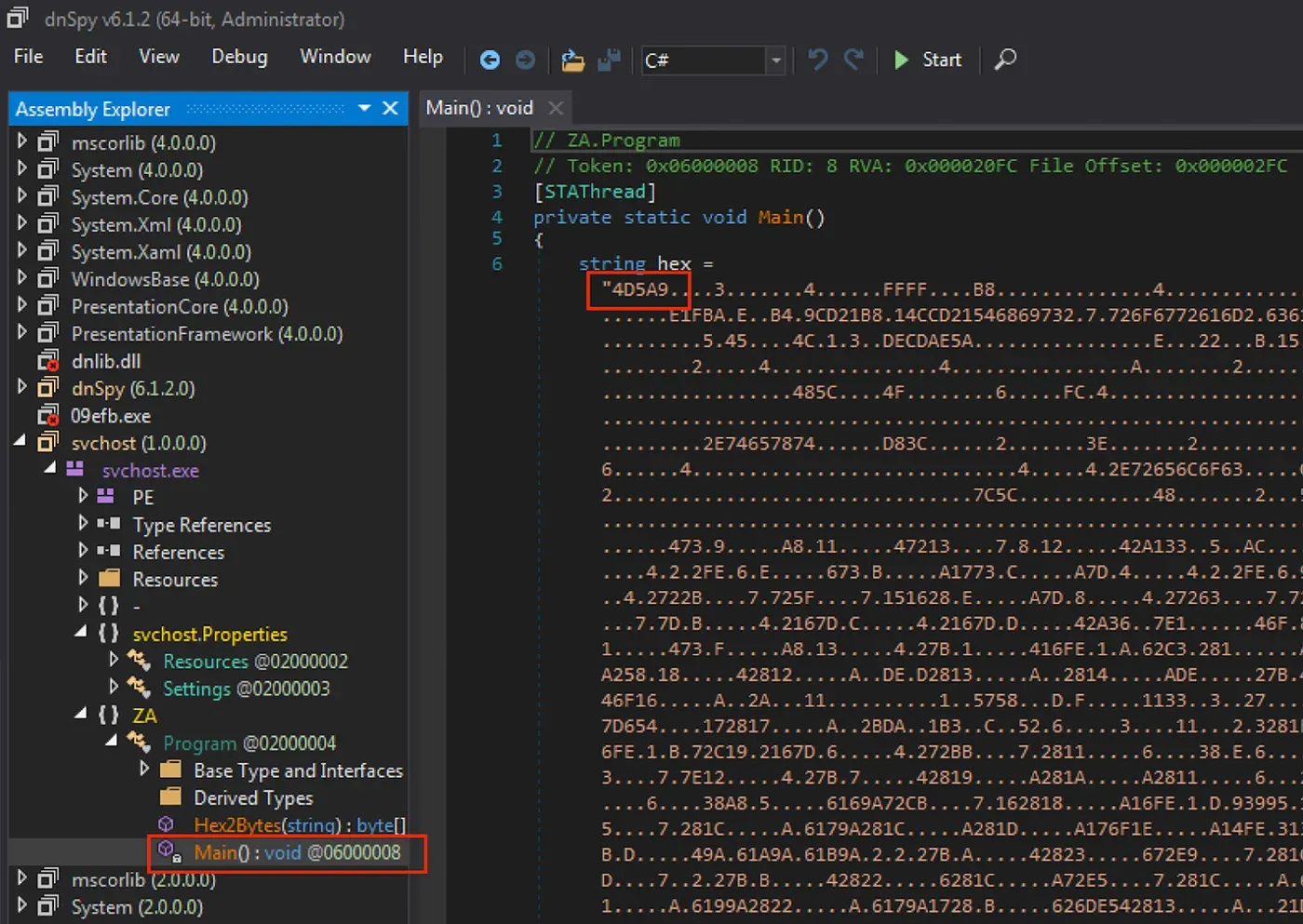
Figure 6: RevengeRAT Embedded in .NET Dropper with PE Magic Highlighted “4D5A”
An alternative method used in another .NET dropper sample is to reverse the order of the characters in a Base64 string and then replace the character “A” with “^”16. This method is observed also using the character “!” as the replacement for “A”. Figure 7 shows the replacement and string reversal using the character “^”.
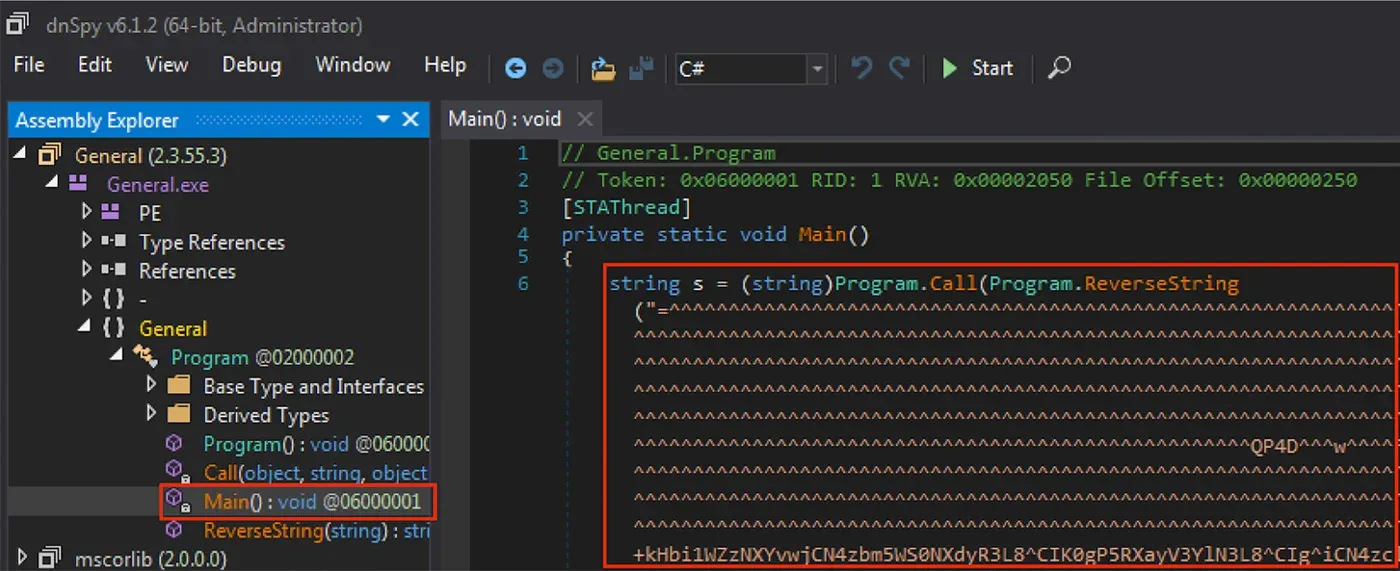
Finally, a third method observed is simply embedding a Base64 string in the .NET executable. This method is shown in Figure 8.
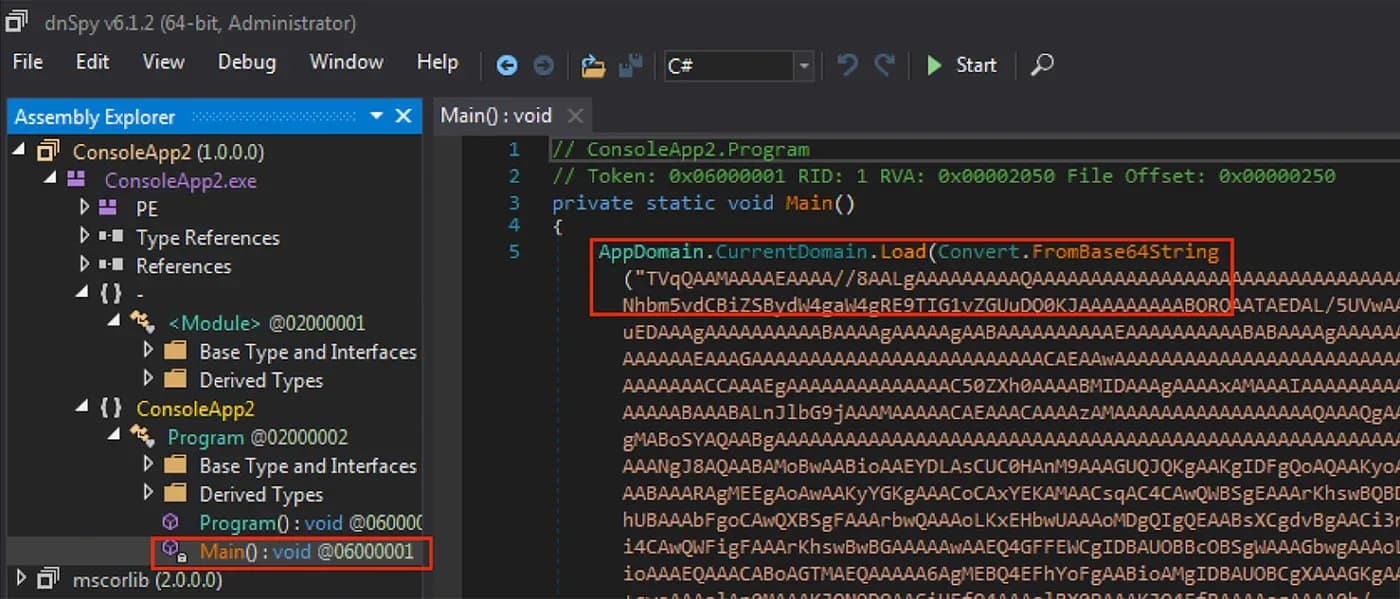
Figure 8: Base64 Payload Embedded in .NET Binary
One PE DLL17 uploaded by this adversary is encoded by converting the executable to hexadecimal string with bytes interspersed with whitespace and other characters. Screenshots of these two encoding formats is shown in Figures 6 and 7. In hexadecimal, the “magic” number at the start of Windows PE executables “MZ” is encoded to “4D5A”. This magic number is highlighted in both screenshots.
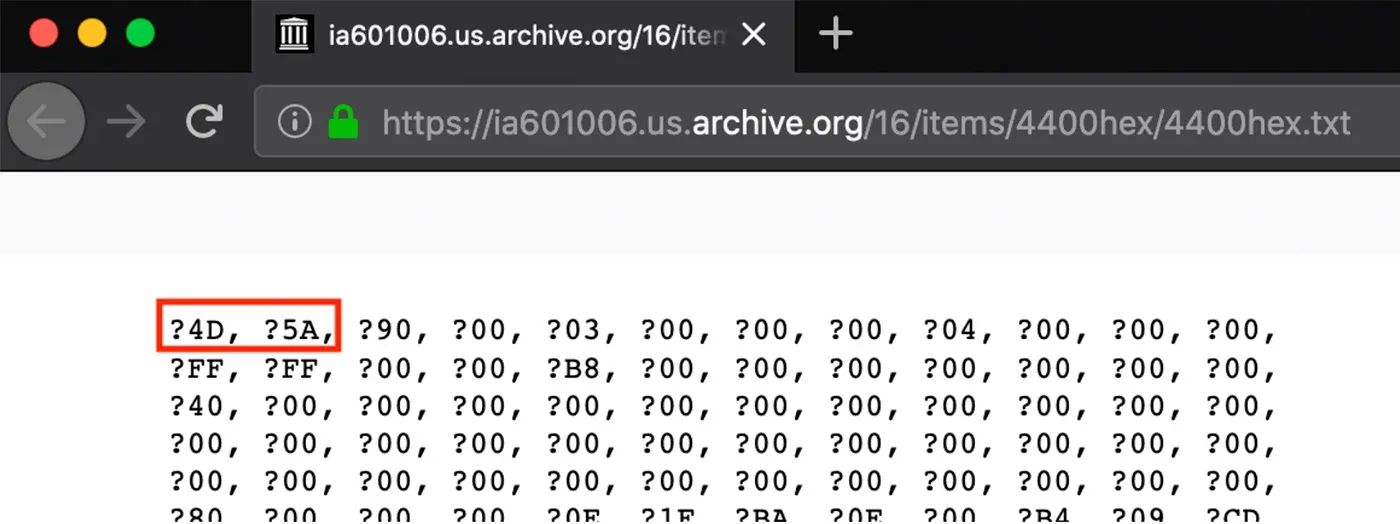
Figure 9: Encoded DLL with Windows PE “4D5A”
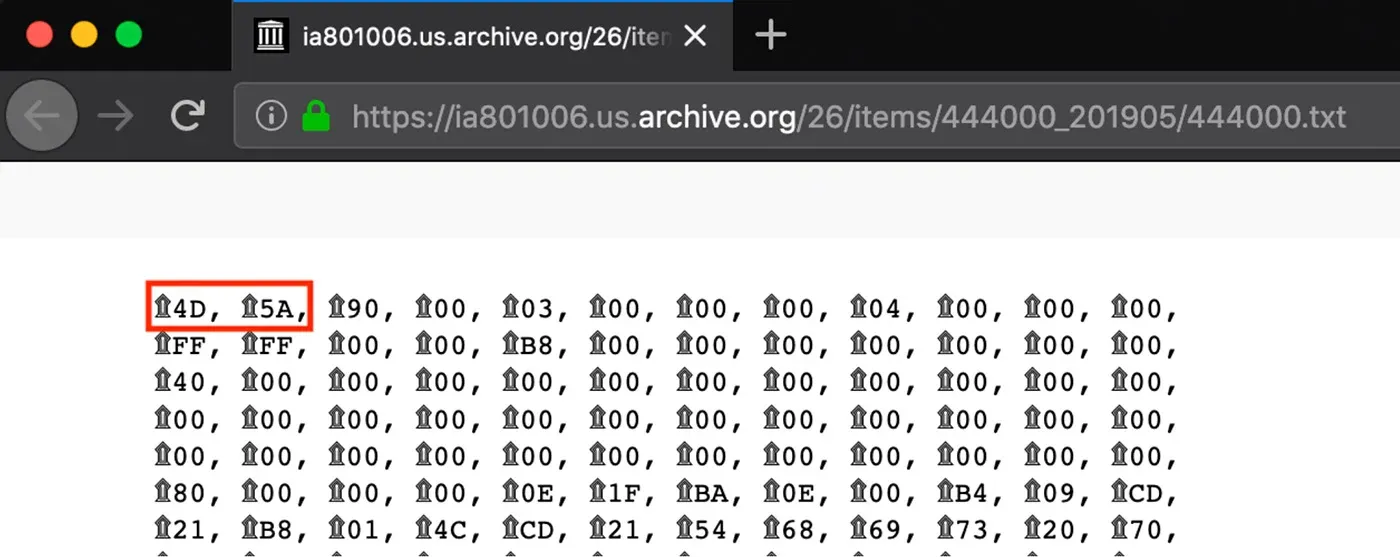
Figure 10: Encoded DLL with Windows PE “4D5A”
This encoding is similar in motivation to encoding PE payloads using Base64. It hinders the executables from being detected. None of the VB script, Javascript, or PowerShell payloads are encoded. However, because they are just text, they are less likely to be detected.
Many of the binaries contain a program database path string (PDB). Some of these PDB strings include a username in the path. One of the initial stage .NET samples18 has a PDB string containing the username “Capony”19. In this same payload delivery chain, the last dropper that delivers the RevengeRAT binary contains the username “Ahmed Sakr” in the PDB string. These PDB strings are easily viewed using the Titanium Platform and appear in the CodeViews section of the analysis report. Each of the RevengeRAT .NET droppers contains this same PDB string. An example of this PDB string is shown in Figure 11. A full list of PDB strings found in all samples is provided at the end of the blog.

Figure 11: PDB String Containing Username “Ahmed Sakr”
Four samples of Vjw0rm were also found being hosted in the same “@robacopony147” persona’s uploads. This is a javascript remote access trojan. It calls back to a C2 for configuration and instructions for various functions to be executed. The RAT makes an HTTP connection to the C2 at the path location “Vre”. It then checks for various commands such as “Cl”, “Sc”, “Ex”, “Rn”, “Up”, “Un”, and “RF”. The Cl command causes the RAT to exit and the Sc command creates a file and executes it using the run method from the script's shell command. The Ex command alternatively evaluates additional Javascript code downloaded from the C2. These three functionalities are seen in Figure 12.

Figure 12: Vjw0rm Commands
Each of the Vjw0rm samples checks for a previous infection by looking for the registry key “HKCU\vjw0rm”. This and other registry keys used by the RAT can be seen in Figure 13.

Figure 13: Vjw0rm Registry Keys with “HKCU\vjw0rm” Highlighted
The C2 URL is contacted via HTTP POST. The URL is hardcoded into the RAT as seen in Figure 14. Two of the Vjw0rm samples which execute call back to the same C2 hostname as the RevengeRAT samples: googleq.myq-see[.]com, one calls back to a different C2 hostname: googletest.linkpc[.]net, and one fails to execute. The C2 URL was not recoverable from the sample which did not execute.

Figure 14: Vjw0rm C2 URL
In addition to the variety of payloads described above, a single sample identified as “ClipBanker” is also found among this user’s uploads20. This sample contains a PDB string with the name “Bitcoin Grabber”21. It has a Bitcoin address hard coded in the sample22. At the time of writing, this wallet has received 0.00820733 BTC or approximately $60.
The email address associated with this persona, “cristiano_cr7_2007@outlook[.]com” is found in two locations in the open source. First, the username portion of the email address matches exactly to an Instagram user “cristiano_cr7_2007”23. It is unclear from this user’s posts whether or not this account is related or is a name collision. However, a post24 found on a hacker forum with this email address in a discussion about a PHP backdoor does indicate that this adversary is active on hacker forums as recently as November 2018. A screenshot of the forum post is found in Figure 8.
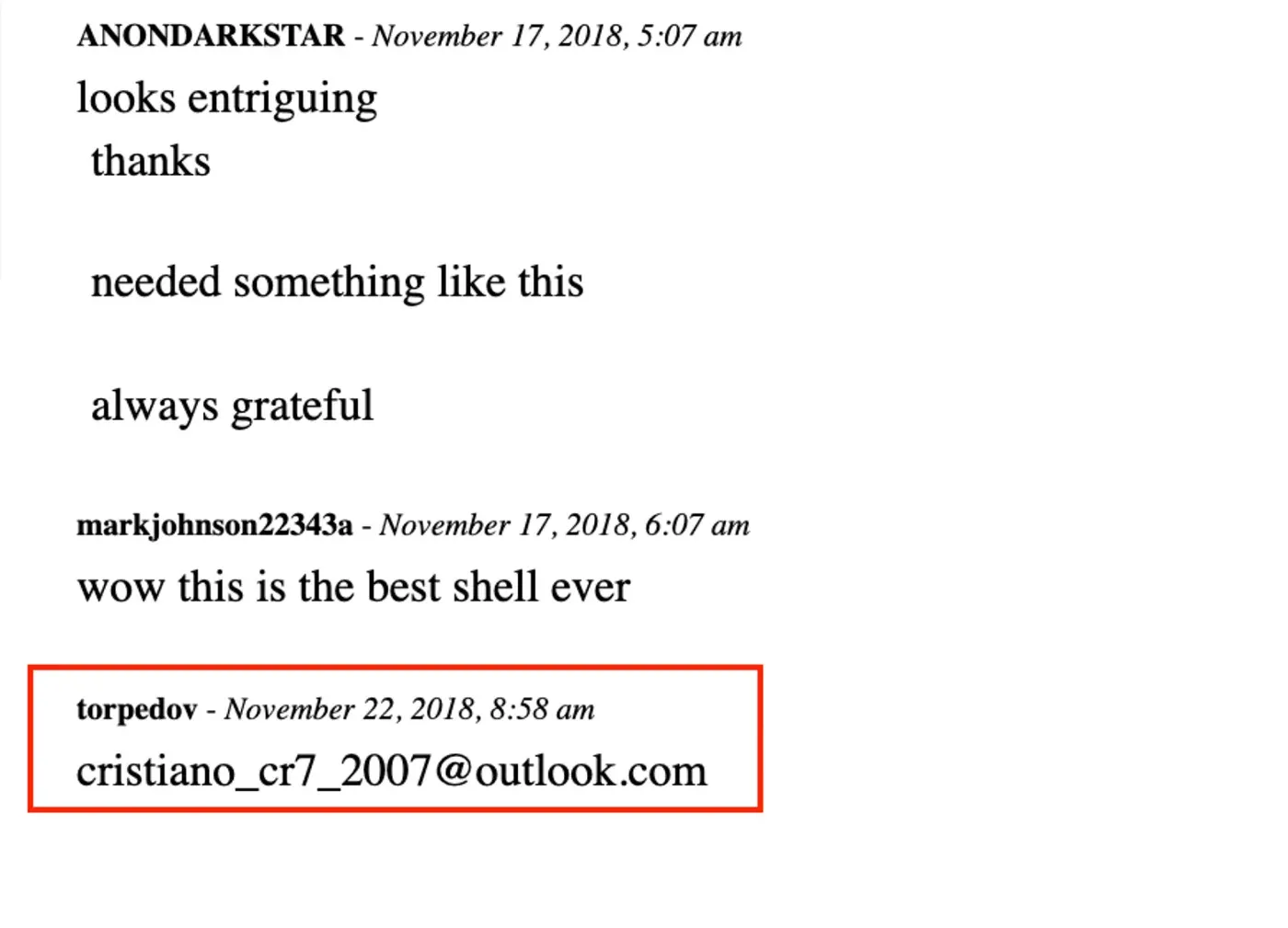
Figure 15: Forum Post with Adversary Email Address
Pivoting on Infrastructure in the Titanium Platform
Adversaries don’t dwell on one single location for hosting payloads. Therefore, the samples found via the process seen above are only the tip of the iceberg. When a sample is analyzed using the Titanium Platform, network indicators are indexed for search using the “uri” search query keyword. Starting with the dynamic DNS hostname used by a set of njRAT samples hosted on archive.org, hino.ddnsking[.]com, search results find a large set of related samples of njRAT and other malware families. The results of this search is seen in Figure 9.
![Search Results for Samples Related to hino.ddnsking[.]com](/_next/image?url=%2Fapi%2Fmedia%2Ffile%2FRAT_16-1400x1046.webp&w=3840&q=75)
Figure 16: Search Results for Samples Related to hino.ddnsking[.]com
Public hosting sites present a challenge for network defenders. These sites are typically found on whitelists. This creates a situation that can be exploited by adversaries by concealing payloads on public sites using various encoding techniques. In addition to the obvious types of supply chain attacks, this type of attack loosely fits in the category of data supply chain. Any files and data downloaded from this type of site should be analyzed carefully for concealed malicious payloads.
https://archive.org/details/@hacked_garga
https://archive.org/details/@killershenegami
https://archive.org/details/@xjnchng
https://archive.org/details/@youyoudr
https://archive.org/details/@sadsdsdads
https://archive.org/details/@heliose10
https://archive.org/details/@hamza629
https://archive.org/details/@hamzawi524
https://archive.org/details/@anaiix
https://archive.org/details/@helloworldex
https://archive.org/details/@elkingahme2
https://archive.org/details/@mehdi0202
https://archive.org/details/@petter_maffia
https://archive.org/details/@url90
https://archive.org/details/@abdooalg
https://archive.org/details/@e7b043d98e
https://archive.org/details/@zikoaaa
https://archive.org/details/@robacopony147
Download the File Set
Note: As of Jan 31, 2020, Archive.org responded to our notification and removed subject files from their repository.
Read our other RAT blog: When Malware RATs on their Owners
Get your 14-day free trial of Spectra Assure
Get Free TrialMore about Spectra Assure Free Trial